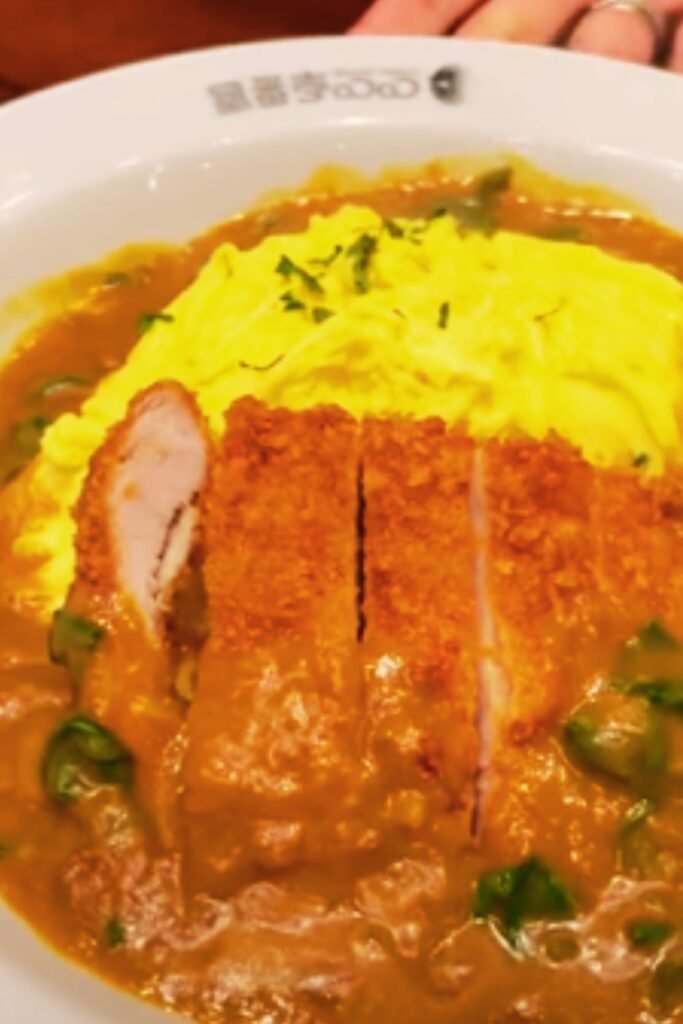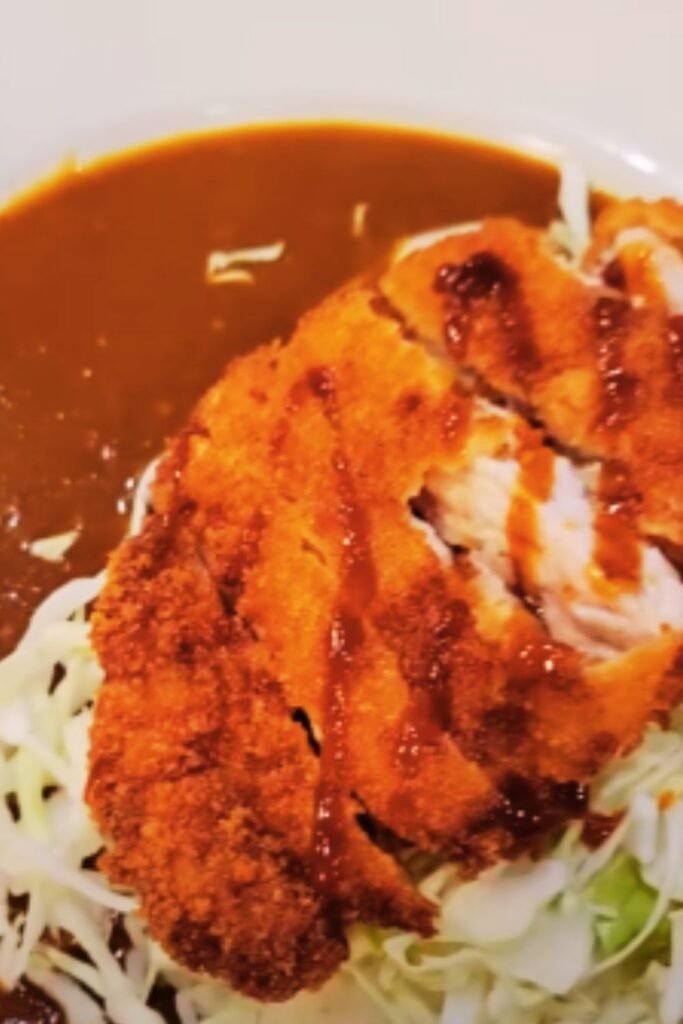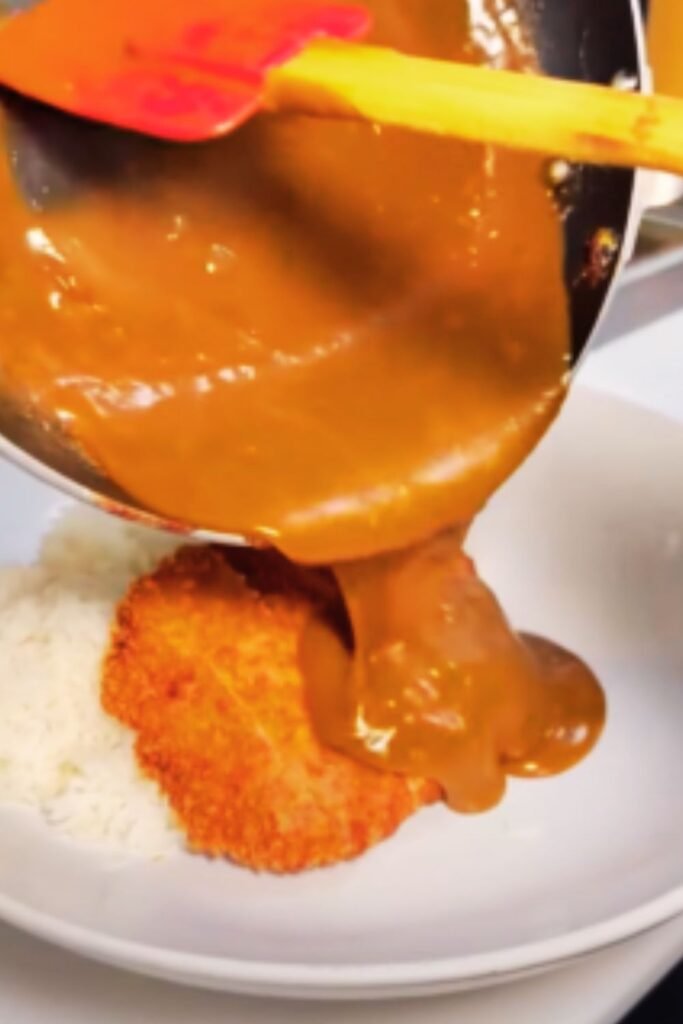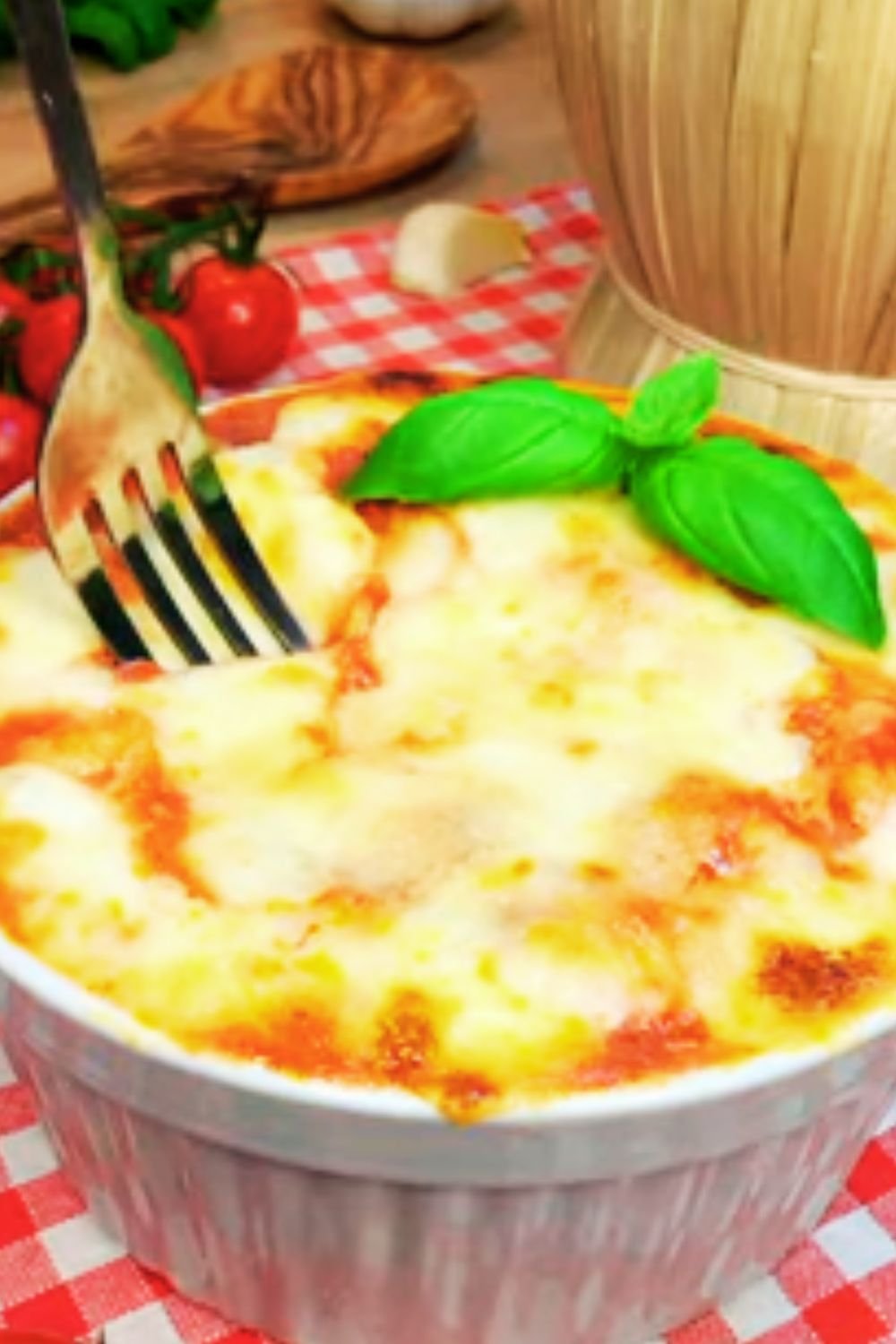There’s something magical about the combination of crispy panko-coated pork cutlets and rich, aromatic curry sauce that makes Japanese Katsu Curry one of my absolute favorite comfort foods. Having spent considerable time exploring Japan’s food scene and perfecting this dish in my own kitchen, I’m excited to share everything I’ve learned about creating an authentic katsu curry experience at home.
Introduction to Japanese Curry
Japanese curry (カレー, karē) may surprise those unfamiliar with it. Unlike its Indian or Thai counterparts, Japanese curry has a distinctly milder, sweeter profile with a thick, gravy-like consistency. This beloved national dish arrived in Japan during the Meiji era (1868-1912) via British sailors and has since evolved into something uniquely Japanese.
The katsu curry combination specifically—breaded pork cutlet served alongside or topped with curry sauce—represents a perfect harmony of textures and flavors that’s become a staple in Japanese homes and restaurants alike.
A Brief History of Japan’s Love Affair with Curry
Japanese curry has a fascinating history that begins in the late 19th century. The Imperial Japanese Navy adopted curry from the British Royal Navy as a practical meal that could feed many sailors while preventing beriberi, a vitamin deficiency that plagued naval forces. From these utilitarian beginnings, curry quickly captured the Japanese palate.
By the early 20th century, curry had made its way into Japanese households, and in 1926, the first commercial curry roux blocks were introduced, making preparation even more accessible. Today, curry is so ingrained in Japanese culture that it’s considered one of the country’s national dishes alongside sushi and ramen.
The addition of the crispy katsu element came later, creating what many consider the ultimate Japanese comfort food combination. The word “katsu” comes from “katsuretsu,” a Japanese approximation of the English word “cutlet,” though it’s also a homophone for the word meaning “to win” (勝つ), making it a popular meal before important events.
Essential Ingredients for Authentic Katsu Curry
Creating an authentic katsu curry requires attention to both the curry sauce and the katsu component. Here’s what you’ll need:
For the Curry Sauce:
- Japanese curry roux blocks
- Onions
- Carrots
- Potatoes
- Garlic
- Ginger
- Vegetable or chicken stock
- Cooking apple or honey (for sweetness)
- Soy sauce
- Vegetable oil
- Optional seasonings: garam masala, curry powder, Worcestershire sauce
For the Pork Katsu:
- Boneless pork loin or tenderloin
- Salt and pepper
- All-purpose flour
- Eggs
- Panko breadcrumbs
- Vegetable oil for frying
Additional Components:
- Japanese short-grain rice
- Fukujinzuke (Japanese pickled vegetables)
- Benishoga (red pickled ginger)
Traditional vs. Modern Approaches to Japanese Curry
The approach to Japanese curry has evolved significantly over time:
| Traditional Approach | Modern Adaptations |
|---|---|
| Relies heavily on packaged curry roux | May use homemade curry powder blends |
| Less complex flavor profile | Incorporates additional spices and ingredients |
| Always served with white rice | Sometimes served with alternatives like udon noodles |
| Limited vegetable additions | Creative additions like mushrooms, eggplant, or bell peppers |
| Minimal garnishes | Elaborate garnishes and toppings |
While the traditional approach offers authentic flavor and ease of preparation, modern adaptations allow for personalization and dietary accommodations. In my recipe, I’ll strike a balance between tradition and innovation.
Detailed Recipe: Japanese Pork Katsu Curry
The Perfect Curry Sauce
Ingredients:
- 2 medium onions, finely diced
- 2 medium carrots, diced into small cubes
- 1 large potato, cut into 1-inch cubes
- 3 cloves garlic, minced
- 1 tablespoon fresh ginger, grated
- 2 tablespoons vegetable oil
- 1 small apple, grated (or 1 tablespoon honey)
- 4 cups chicken or vegetable stock
- 1 box (typically 220g) Japanese curry roux (I recommend S&B Golden Curry, Medium Hot)
- 1 tablespoon soy sauce
- 1 teaspoon garam masala (optional, for depth of flavor)
- 1 tablespoon Worcestershire sauce (optional)
Instructions:
- Heat vegetable oil in a large pot over medium heat. Add the diced onions and sauté until translucent and beginning to caramelize, about 10-15 minutes. This slow cooking process is crucial for developing the sweet foundation of Japanese curry.
- Add the minced garlic and grated ginger, cooking for another minute until fragrant.
- Add the diced carrots and potatoes, stirring to coat them in the aromatic oil. Cook for about 3-4 minutes.
- Pour in the stock and bring to a simmer. Add the grated apple (or honey if using), which helps tenderize the meat and adds natural sweetness.
- Simmer covered for about 15-20 minutes, or until the vegetables are tender when pierced with a fork.
- Turn the heat to low. Break the curry roux into pieces and add to the pot, stirring until completely dissolved.
- Add soy sauce, and if using, the garam masala and Worcestershire sauce.
- Simmer gently for another 5-10 minutes, stirring occasionally to prevent burning. The sauce should thicken considerably.
- If the curry becomes too thick, add a little water or stock. If too thin, simmer longer to reduce.
The Perfect Pork Katsu
Ingredients:
- 4 boneless pork loin chops (about 150g each and 2cm thick)
- Salt and freshly ground black pepper
- 1/2 cup all-purpose flour
- 2 large eggs, beaten
- 2 cups panko breadcrumbs
- Vegetable oil for deep frying
Instructions:
- Prepare the pork cutlets by trimming excess fat. Make small cuts around the edges to prevent curling during frying.
- Using a meat mallet, gently pound each cutlet to about 1.5cm thickness. This tenderizes the meat and ensures even cooking.
- Season both sides of each cutlet with salt and pepper.
- Set up your breading station with three shallow dishes: flour in the first, beaten eggs in the second, and panko breadcrumbs in the third.
- Coat each cutlet first in flour, shaking off excess. Then dip in egg, allowing excess to drip off. Finally, press firmly into panko breadcrumbs, ensuring an even coating.
- Heat vegetable oil in a deep, heavy-bottomed pan to 170°C (340°F). The oil should be about 2-3 inches deep.
- Carefully lower each breaded cutlet into the hot oil. Fry for about 4-5 minutes, turning once, until golden brown and crispy. The internal temperature should reach 63°C (145°F).
- Transfer the fried cutlets to a wire rack lined with paper towels to drain excess oil. Let rest for 5 minutes before slicing.

Assembling Your Katsu Curry
- Cook Japanese short-grain rice according to package instructions. For best results, rinse the rice several times until the water runs clear, then cook with a ratio of 1:1.2 (rice:water).
- Once the rice is cooked, use a rice paddle to fluff it gently.
- Slice the rested katsu into strips about 1-inch wide.
- To serve, place a portion of rice on one side of a shallow bowl or plate. Ladle curry sauce onto the other side, slightly overlapping the rice.
- Arrange the sliced katsu on top of the curry sauce or alongside it.
- Serve with traditional accompaniments like fukujinzuke (Japanese pickled vegetables) and benishoga (red pickled ginger).
Customizations and Variations
Japanese curry is incredibly versatile, and there are many ways to customize your katsu curry:
Protein Options:
- Chicken Katsu (using boneless chicken breasts)
- Beef Katsu (using thinly sliced beef steaks)
- Tonkatsu (using thicker cut of pork)
- Vegetarian Katsu (using firm tofu or seitan)
Curry Heat Levels:
- Mild (Amakuchi): Perfect for those new to Japanese curry or who prefer less spice
- Medium (Chuukara): The most popular and balanced option
- Hot (Karakuchi): For those who enjoy a spicier kick
Additional Mix-ins for the Curry:
- Mushrooms (shiitake or button)
- Peas
- Bell peppers
- Eggplant
- Kabocha squash

Advanced Tips for Curry Mastery
After years of perfecting my katsu curry technique, I’ve gathered some insider tips that elevate this dish from good to exceptional:
For the Perfect Curry Sauce:
- Caramelize those onions: Spend at least 15 minutes slowly cooking the onions until they’re golden brown. This develops a deep, sweet flavor base that’s essential for authentic Japanese curry.
- Double-stock method: For extra richness, make a quick dashi stock first, then use it as the liquid for your curry instead of plain water or standard stock.
- Rest your curry: Make the curry sauce a day ahead and refrigerate overnight. The flavors will develop and meld beautifully.
- Secret ingredients: A small amount of dark chocolate (about 5g) or a tablespoon of instant coffee can add remarkable depth to your curry sauce.
For the Perfect Katsu:
- Temperature control: Rest the pork at room temperature for 30 minutes before cooking to ensure even frying.
- Oil quality: Use fresh oil with a high smoke point (like canola or peanut oil) for the cleanest flavor.
- Double coating: For extra-crispy katsu, double-dip in the egg and panko.
- Oil temperature: Maintain the oil at 170°C (340°F) throughout frying for the perfect golden crust without excess oil absorption.
For the Perfect Rice:
- Proper washing: Rinse Japanese short-grain rice at least 4-5 times, or until the water runs almost clear.
- Soaking: After rinsing, let the rice soak for 30 minutes before cooking for optimal texture.
- Resting: After cooking, let the rice sit covered for 10 minutes to perfectly distribute moisture.
Common Challenges and Solutions
| Challenge | Cause | Solution |
|---|---|---|
| Soggy katsu | Oil not hot enough | Maintain oil temperature at 170°C (340°F) |
| Curry too thin | Insufficient reduction | Simmer longer or add a cornstarch slurry |
| Curry too thick | Over-reduction | Add small amounts of stock or water |
| Bland curry | Insufficient spices | Add garam masala or curry powder to taste |
| Tough pork | Overcooking or poor quality meat | Use meat thermometer and stop at 63°C (145°F) internal temperature |
| Curry burning | Heat too high during simmering | Use low heat and stir frequently |
| Uneven panko coating | Improper breading technique | Press panko firmly onto the meat with dry hands |
| Rice too sticky | Improper washing or water ratio | Rinse thoroughly and use 1:1.2 rice to water ratio |
Serving Suggestions and Accompaniments
In Japan, katsu curry is typically enjoyed as a complete meal in itself, but there are several traditional and modern accompaniments that enhance the experience:
Traditional Japanese Accompaniments:
- Fukujinzuke: These sweet, tangy pickled vegetables provide a refreshing contrast to the rich curry.
- Benishoga: Red pickled ginger adds a sharp, palate-cleansing element.
- Rakkyo: Pickled scallions offer a mild onion flavor and crunchy texture.
- Oshinko: Various Japanese pickles that balance the meal with their acidity.
Modern Accompaniments:
- Fresh salad: A simple green salad with wafu (Japanese-style) dressing lightens the meal.
- Miso soup: A small bowl of miso soup can round out the meal in traditional Japanese fashion.
- Steamed vegetables: Lightly seasoned with salt or a dash of soy sauce.
- Japanese-style fried egg: With a runny yolk that creates a luscious sauce when mixed with the curry.

Health Considerations and Dietary Adaptations
While traditional katsu curry is a relatively indulgent dish, there are several ways to adapt it for various dietary needs:
Lower-Calorie Version:
- Bake the panko-crusted pork in the oven at 200°C (390°F) with a light spray of oil instead of deep-frying
- Use a reduced amount of curry roux and increase the vegetable content
- Serve with a mixture of brown rice and cauliflower rice
Gluten-Free Adaptation:
- Use gluten-free panko breadcrumbs or crushed rice cereal
- Make a homemade curry roux using rice flour as a thickener
- Ensure your soy sauce and Worcestershire sauce are gluten-free varieties
Vegetarian/Vegan Options:
- Replace pork with firm tofu, tempeh, or seitan
- Use vegetable stock for the curry base
- For vegan katsu, use plant-based egg alternatives for the coating
Reduced Sodium Version:
- Choose low-sodium curry roux or make your own spice blend
- Use low-sodium stock and reduced-sodium soy sauce
- Increase the fresh herb content for flavor without added salt
Cultural Context and Etiquette
In Japan, curry has its own unique cultural context and eating etiquette:
- Curry spoons: Japanese curry is traditionally eaten with a western-style spoon rather than chopsticks due to its thick consistency.
- Complete meal concept: Japanese curry is considered a complete one-plate meal, containing carbohydrates, protein, and vegetables.
- Curry day: Many Japanese schools and workplaces serve curry on specific days of the week, often Friday, which is known as “curry day” (カレーの日, karē no hi).
- Family dish: In Japanese households, curry is often prepared in large batches and eaten over several days, with the flavor improving over time.
- Regional variations: Different regions in Japan have their own curry specialties, such as Hokkaido-style with local seafood or Kanazawa-style with fresh vegetables.
Frequently Asked Questions
What is Japanese curry roux and can I make it from scratch? Japanese curry roux is a solid block of curry spices, flour, fat, and seasonings that forms the base of Japanese curry sauce. While commercial versions like S&B Golden Curry or House Vermont Curry are most common, you can make it from scratch. A basic homemade version combines curry powder, garam masala, flour, butter, and seasonings like soy sauce and ketchup.
How does Japanese curry differ from Indian or Thai curries? Japanese curry is generally milder, sweeter, and thicker than its Indian or Thai counterparts. It has a gravy-like consistency and contains fewer spices, focusing on comfort rather than heat or complexity. The flavor profile is more subtly spiced, often with fruity undertones from ingredients like apple.
Can I prepare components of katsu curry in advance? Absolutely! The curry sauce actually improves in flavor when made a day or two ahead and refrigerated. For the katsu, you can bread the cutlets up to a day in advance and refrigerate them, though they should be fried just before serving for optimal crispiness.
What’s the best type of rice to serve with katsu curry? Japanese short-grain rice is ideal for katsu curry. Its sticky texture is perfect for soaking up the curry sauce. Brands like Koshihikari or Calrose work well. Always rinse the rice thoroughly before cooking to remove excess starch.
Is katsu curry very spicy? Traditional Japanese curry is mild compared to many other Asian curries. Most commercial curry roux blocks come in mild, medium, and hot varieties, with even the “hot” version being relatively manageable for most palates. You can always adjust the spice level by choosing different roux blocks or adding cayenne pepper.
What’s the best way to reheat leftover katsu curry? For best results, store the curry sauce and katsu separately. Reheat the curry sauce in a saucepan over low heat, adding a little water if it’s too thick. The katsu can be reheated in a 350°F (180°C) oven for about 10 minutes to restore some crispness. Avoid microwaving the katsu as it will become soggy.
Can I freeze Japanese curry? The curry sauce freezes exceptionally well for up to 3 months. Portion it into freezer-safe containers for easy reheating. However, the katsu doesn’t freeze well once cooked, as the breading becomes soggy upon thawing.
Conclusion
Japanese pork katsu curry represents the perfect marriage of textures and flavors—crispy, juicy katsu paired with rich, aromatic curry sauce and fluffy rice creates a deeply satisfying meal. By understanding the techniques, ingredients, and cultural context behind this beloved dish, you can create an authentic Japanese curry experience in your own kitchen.
Whether you follow the traditional approach or incorporate some modern adaptations, the key to exceptional katsu curry lies in attention to detail—from properly caramelizing the onions to maintaining the perfect oil temperature for frying. With practice, you’ll develop your own signature version of this comforting classic.
I hope this guide inspires you to explore the wonderful world of Japanese curry. There’s something truly special about the moment when you cut through the crispy katsu coating to reveal juicy, tender meat beneath, then drag it through the rich curry sauce. It’s a culinary experience that brings a taste of Japan right to your table.
And remember, like many great comfort foods, katsu curry often tastes even better the next day as the flavors continue to develop and meld!


